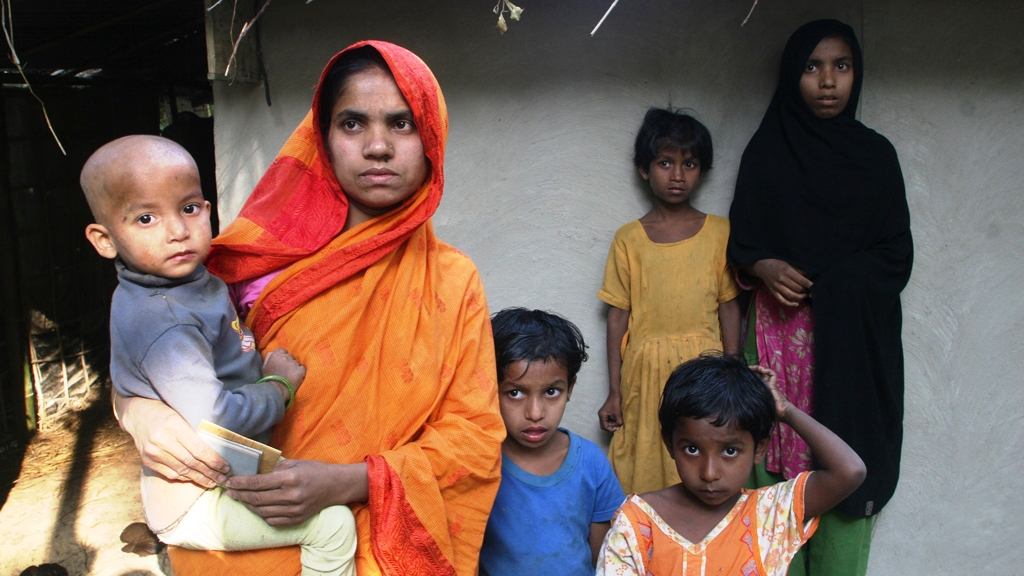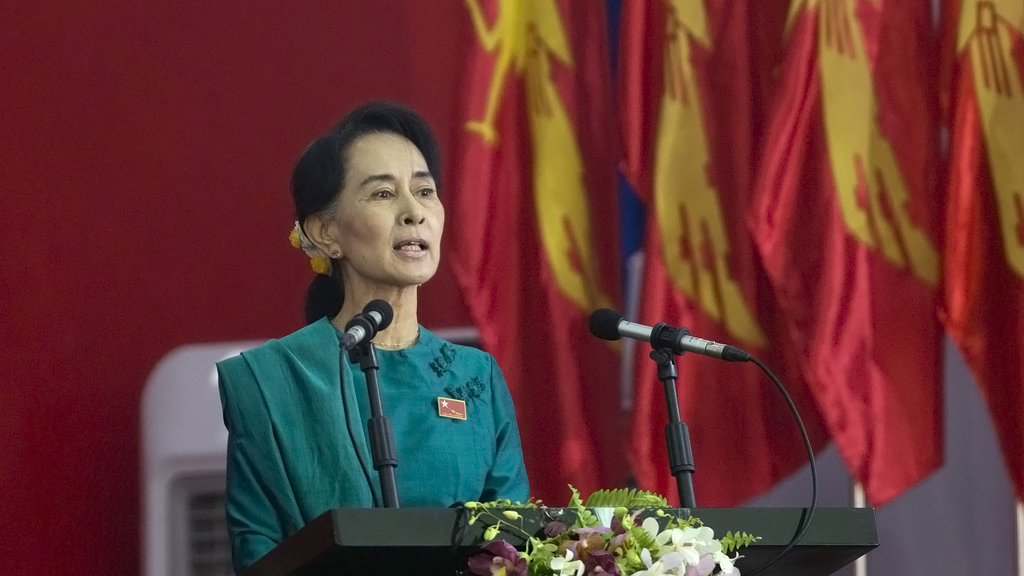In the shadow of an icon

Two factors determine whether we are moved by the persecution of people in a far-flung corner of the world. Do the media, including social networks, take up the story, thereby reducing the geographical and cultural distance for us? And: given our Western socialisation, are there icons of suffering or struggle, objects of identification that can reflect the drama and injustice in such a way that it captures our attention?
Myanmar – a nation still referred to by some as Burma – is like a showcase of how these mechanisms work, and of their peculiar outcomes. In the past, no one embodied the icon as perfectly as Aung San Suu Kyi, the lady with the flower in her hair. Indeed, her gracious silhouette has embedded itself in the memory bank of political images to such an extent that it is almost as if the concept of the icon only acquired political capital through her.
Stateless and excluded
Meanwhile, far from the spotlight, a million people in Myanmar are living in the shadows: the Rohingya, declared stateless and robbed of almost all their civil rights. They need an official permit to travel, and married couples are not allowed to have more than two children. The United Nations describe the Rohingya, Muslims in a primarily Buddhist nation, as one of the world's most persecuted minorities.
The Rohingya have no iconic figures to represent them. There are few reports on their plight, and hardly any pictures. No one identifies with them. Their suffering has no face and carries no weight. It cannot tap into a wider narrative – at least, not here in the Western world, where the big story is of Muslims as perpetrators, not victims.
Myanmar now has ATMs, and building sites for luxury resorts. The US and the European Union are lifting sanctions, and Suu Kyi has designs on the presidency. Demanding that human rights be afforded to the Rohingya is not a move with popular appeal.

Data collected for a census is currently being evaluated. In the multi-ethnic state of Myanmar, this is an important step in preparation for the 2015 elections, to clarify questions of representation. The Rohingya are being left out of this process. In accordance with official instructions, when census takers enquired about ethnicity and religion, anyone stating membership of the Muslim minority was not incorporated in the data. Myanmar's Minister for Immigration and Population said that including the Rohingya could have been misunderstood as a first step towards awarding them citizenship. The official view, one apparently shared by many of their compatriots, is that the Rohingya are illegal immigrants from Bangladesh whose ethnicity is Bengali.
But who are they really? Some historians trace their origins back to Arab mariners who mixed with the local population in the seventh and eighth centuries. Other waves of migration followed. Consequently, the Rohingya do not have a uniform ethnic background. However, they certainly do have a common language and culture. Rakhine State, where they are concentrated today, used to be a kingdom in its own right called Arakan, which periodically ruled over parts of Bengal and was annexed to colonial Burma by the British against the wishes of its people.
Citizenship revoked
For a long time, Muslims and Buddhists lived alongside one another in peace. When independence came in 1948, the Rohingya were initially recognised as an indigenous ethnic group. However, since 1962, when the military first seized power, their citizenship has been successively revoked. There have also been repeated attempts to drive them out of their home province.
The areas where the Rohingya live have been attacked by mobs several times in the past two years. Hostile sentiments have been stoked by Buddhist hate preachers. 140,000 Rohingya now live in overflowing refugee camps. The aid organisation Doctors Without Borders was recently banned from carrying out its work there; other humanitarian groups were driven away by force. Many Rohingya are trying to reach neighbouring countries by boat – Bangladesh, Thailand, Malaysia, Indonesia. Some 35,000 refugees are registered in Malaysia alone.

Suu Kyi has criticised only the two-child policy for the Rohingya – not their exclusion from the census, and not the pogroms. Showing solidarity with these supposed foreigners could hamper another project. In order to be able to become president, Suu Kyi must first effect a change in the constitution which, up to now, has prevented anyone with a foreign spouse or foreign children from taking up the post. Suu Kyi's sons are British, and so was her late husband.
The lady herself has always been convinced that she knows best what is good and useful for a democracy in Myanmar. The daughter of national hero General Aung San is now beating the drum of national cohesion – for the Burmese-Buddhist majority, to which she herself belongs.
I recall a meeting with Suu Kyi in Rangoon more than ten years ago. Her house arrest had just been suspended, and she was conducting a dialogue with the generals in absolute secrecy. The gloomy room that served as her party's main headquarters was enlivened by just two adornments: life-sized portraits of Suu Kyi and of her father.
And then there she stood, with the obligatory flower in her hair, but with a cool, imperious air about her. In conversation, she held forth condescendingly in her accentuated Oxford English. Each and every one of my questions, even the most polite, was initially answered with a rebuke. Some members of the party were already calling her a dictator back then.
Even under house arrest Suu Kyi, rocked as a baby in the arms of generals, was still a member of the upper class: humiliated, but never totally isolated. She has little in common with the Rohingya, a people forced to exist in the shadows.
However, more than criticism of this former icon, what we need now is criticism of the mechanisms that lead to icon creation: of this foolish, obsessive personalisation of complex situations, and of the schematics that require the evil generals of Rangoon to be contrasted with an oppressed people, deemed gentle on the grounds that Myanmar has Buddhism and pretty pagodas.
Charlotte Wiedemann
Translated from the German by Nina Coon
© Qantara.de 2014
Editor: Charlotte Collins/Qantara.de